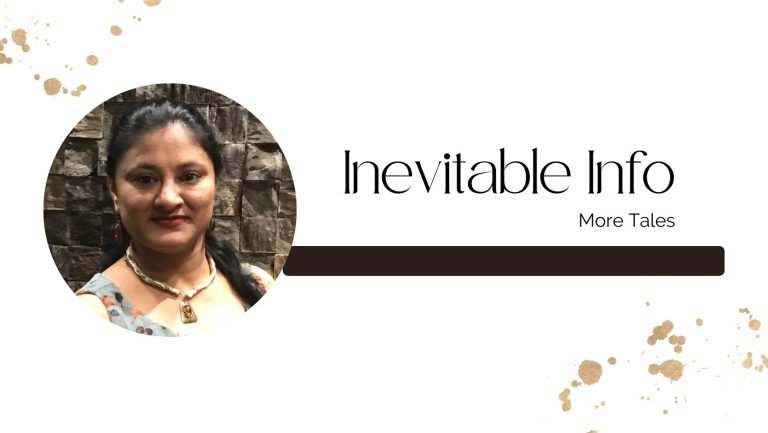
Introduction
On April 20, skywatchers in parts of the world will have the opportunity to witness a rare celestial event known as the “Ring of Fire” solar eclipse. This unique occurrence is a hybrid eclipse that combines elements of both annular and total eclipses, resulting in a stunning visual spectacle. However, viewing the eclipse safely requires some preparation and knowledge. In this post, we will provide you with all the information you need to enjoy this rare event, including what a hybrid eclipse is, where it will be visible, and tips for safely viewing the eclipse. So mark your calendars and get ready to witness the “Ring of Fire” solar eclipse in all its glory!
1. Understanding the “Ring of Fire” solar eclipse
The “Ring of Fire” solar eclipse is a rare celestial event that occurs when the moon passes between the Earth and the sun, but does not completely cover the sun’s disk. This creates a stunning and awe-inspiring sight where the sun appears as a bright ring of fire around the dark silhouette of the moon.
Also known as an annular eclipse, this phenomenon is different from a total solar eclipse, where the moon completely covers the sun and the sky turns dark. During a “Ring of Fire” eclipse, the sky remains bright, but with a unique and beautiful ring of light around the sun.
The “Ring of Fire” eclipse is a hybrid eclipse, meaning that its appearance can vary depending on where it is viewed from on Earth. In some areas, the eclipse will appear as a partial eclipse, with only a portion of the sun covered by the moon. In other areas, it will be seen as a full “Ring of Fire” eclipse, with the sun completely surrounded by the moon’s shadow.
This rare astronomical event is truly a sight to behold and has captured the imagination of people around the world for centuries. With proper precautions and preparation, viewers can safely witness this stunning event and make memories that will last a lifetime.

2. When and where to see the hybrid solar eclipse
The “Ring of Fire” solar eclipse, also known as the hybrid solar eclipse, is a rare natural phenomenon that occurs when the moon passes between the sun and the Earth, blocking out the sun’s light and creating a dark shadow on the Earth’s surface. This year, the hybrid solar eclipse will occur on April 20, and will be visible from parts of South America, Africa, and Asia.
If you’re planning on viewing the hybrid solar eclipse, it’s important to know exactly when and where to look. The eclipse is expected to begin at around 06:00 UTC and will reach its peak at around 07:06 UTC. It will last for approximately 1 hour and 23 minutes, and will be visible from a narrow path that stretches from the eastern coast of Gabon in Africa, across the Congo, the Democratic Republic of Congo, Uganda, Kenya, Somalia, and Ethiopia, before heading out to the Arabian Peninsula, and ending in parts of southern Asia.
If you’re lucky enough to live in one of the areas where the hybrid solar eclipse will be visible, be sure to take the necessary precautions to protect your eyes. Never look directly at the sun during an eclipse, as this can cause permanent damage to your eyes. Instead, use special solar filters or eclipse glasses to view the eclipse safely. And don’t forget to enjoy this rare and beautiful natural phenomenon!
3. Preparing to view the eclipse safely
Preparing to view the eclipse safely is crucial to avoid damaging your eyes. Looking at the sun directly, even during an eclipse, can be harmful to your eyesight. You should never attempt to view the eclipse with the naked eye or through binoculars, telescopes, or any unfiltered device. Eclipse glasses are a safe choice for direct viewing, as they are made with a special type of solar filter that blocks out harmful rays.
It is essential to make sure that your eclipse glasses meet the international standard of ISO 12312-2 to guarantee they are safe for direct viewing of the sun. You can also use a solar filter on your camera lens or telescope to capture the event safely.
Another safe viewing option is to create a pinhole projector. This can be done by poking a small hole in a piece of cardboard and holding it up to the sun, projecting the image onto a surface below. You can also make a pinhole projector with your fingers by overlapping them to create tiny pinholes and then holding them up to the sun.
Remember, safety is paramount when viewing an eclipse, and it’s essential to take the necessary precautions to protect your eyesight. So, make sure you have your eclipse glasses or other safe viewing options ready to go before the big event.
4. How to create a pinhole projector
Creating a pinhole projector is a simple but effective way to view the “Ring of Fire” solar eclipse on April 20th. Here’s how to do it.
First, take a piece of cardboard and make a small hole in the center of it. You can use a pin or a needle to do this. Next, hold the cardboard up to the sun and let the sunlight shine through the hole and onto a surface, such as a wall or the ground. Make sure the surface is in the shade and not in direct sunlight.
As the sunlight passes through the hole, it will create an inverted image of the sun on the surface. This will allow you to safely view the eclipse without damaging your eyes.
It’s important to note that you should not look directly at the sun during the eclipse, even with sunglasses or a camera lens. Doing so can cause permanent damage to your eyes. Instead, use a pinhole projector or other safe viewing method.
5. Using special eclipse glasses
Using special eclipse glasses is the safest way to view the “Ring of Fire” solar eclipse on April 20. These glasses are specially designed to protect your eyes from harmful rays, and they are widely available through online retailers, astronomy shops, and even some local hardware stores.
It’s important to note that regular sunglasses are not enough to protect your eyes during a solar eclipse. The intense light can cause severe damage to your eyes, and even lead to permanent blindness. This is why it’s crucial to use special eclipse glasses that meet international safety standards.
When purchasing eclipse glasses, make sure they have an ISO 12312-2 certification, which is a safety standard that confirms they are safe for direct solar viewing. Also, make sure the glasses aren’t scratched, damaged, or older than 3 years, as these could compromise their effectiveness.
During the “Ring of Fire” solar eclipse, you can use the glasses to view the crescent-shaped sun as the moon passes in front of it. This is a rare and awe-inspiring sight that you won’t want to miss. So, grab your eclipse glasses and get ready for an unforgettable experience!
6. Photographing the eclipse
Photographing the eclipse is a great way to capture this rare natural phenomenon, but it requires some preparation and the right equipment. First and foremost, never attempt to photograph the eclipse with your naked eye. Even during an eclipse, the sun’s rays can cause permanent damage to your eyes. Instead, you’ll need to use a special solar filter to protect your camera and your eyes. This filter blocks out most of the visible light and allows you to safely photograph the eclipse.
When it comes to choosing the right camera, a DSLR or mirrorless camera with manual settings will give you the most control over your shots. You’ll also want to use a tripod to keep your camera steady and reduce blur. The best lenses for photographing the eclipse are telephoto lenses of at least 200mm, which will allow you to zoom in and capture the details of the eclipse.
One popular technique for photographing the eclipse is to create a composite image. This involves taking multiple shots at different stages of the eclipse and combining them using photo editing software. This technique allows you to capture both the corona and the detailed surface of the sun in a single image.
Remember to experiment with different settings and techniques to find the best way to capture the eclipse. And most importantly, don’t forget to take a moment to experience the eclipse with your own eyes, not just through the lens of your camera.
7. Watching the eclipse online
If you are unable to witness the “Ring of Fire” solar eclipse in person, you can still watch it online. Many websites and news outlets will be streaming live coverage of the event for people all around the world to see. This is a great option for those who may be living in areas where the eclipse won’t be visible or for those who don’t have access to the necessary viewing equipment.
There are also many social media platforms that will provide live coverage of the event, such as Twitter and Instagram. You can follow hashtags related to the solar eclipse to see photos and videos from people who are witnessing it in person.
Watching the eclipse online is also a great way to learn more about this rare astronomical event. Many websites and news outlets will have expert commentary and explanations of what is happening during the eclipse, as well as the science behind it. This can be a great educational opportunity for people of all ages who are interested in astronomy and space science.
8. The science behind the “Ring of Fire” eclipse
The “Ring of Fire” solar eclipse is a rare celestial event that occurs when the Moon passes between the Earth and the Sun, casting a shadow on the Earth’s surface. However, during this particular eclipse, the Moon will be too far from the Earth to completely block out the Sun’s light, thus creating a ring of light around the Moon’s silhouette.
This phenomenon occurs because the Moon’s orbit around the Earth is not a perfect circle, but rather an elliptical shape. Therefore, when the Moon is at its furthest point from Earth (known as apogee), it appears smaller in the sky than when it is at its closest point (known as perigee). During this “Ring of Fire” eclipse, the Moon will be at apogee, resulting in the appearance of a ring of light around the darkened Moon.
These eclipses are incredibly rare and only occur when the alignment of the Sun, Moon, and Earth are just right. The last time a “Ring of Fire” eclipse was visible from North America was in 2017, and the next one won’t occur until 2023. Therefore, it’s a unique opportunity for sky gazers and astronomers alike to witness this rare and beautiful spectacle.
9. Popular myths and misconceptions about solar eclipses
Solar eclipses have always been a fascinating natural phenomenon, and there are many myths and misconceptions that have developed around them over the years. One of the most common misconceptions is that solar eclipses can be harmful to pregnant women or unborn children. However, there is no scientific evidence to support this claim. It is safe for pregnant women to observe solar eclipses as long as they take the same precautions as everyone else, such as using proper eye protection.
Another myth is that solar eclipses only happen during certain times of the year or in certain parts of the world. While it is true that some areas of the world see more solar eclipses than others, they can occur at any time of year and in any part of the world. It all depends on the alignment of the sun, moon, and earth.
A common misconception is that solar eclipses are rare events. In fact, there are usually two to five solar eclipses each year. However, not all of them are visible from every part of the world, and some are only partial eclipses.
Finally, some people believe that animals go crazy during a solar eclipse. While it is true that some animals may behave differently during an eclipse, there is no evidence that they go crazy or that they can predict an eclipse before it happens.
By understanding the myths and misconceptions surrounding solar eclipses, you can better prepare yourself for viewing this rare and exciting event. Remember to always use proper eye protection and never look directly at the sun during a solar eclipse.
10. Conclusion and final thoughts on the hybrid solar eclipse
In conclusion, witnessing a rare event like the hybrid solar eclipse is a once-in-a-lifetime opportunity. However, it’s important to remember that viewing the eclipse safely should be your top priority. Never look directly at the sun, even during an eclipse, without proper eye protection.
If you’re unable to travel to the areas where the eclipse will be visible, don’t worry! There will be plenty of live streams and online coverage available for you to experience the eclipse from the comfort of your own home.
Remember to plan ahead, check the weather conditions, and have all the necessary viewing equipment before attempting to view the eclipse. With a little preparation, you can witness this stunning astronomical event and make memories that will last a lifetime.
So, mark your calendars for April 20 and get ready to witness the “Ring of Fire” solar eclipse!






 2023
2023  by us | All Rights Reserved
by us | All Rights Reserved